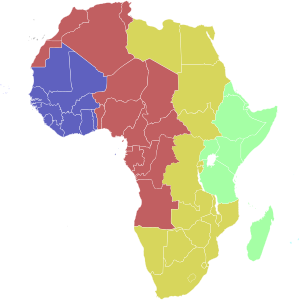
Back Oos-Europese Tyd Afrikaans توقيت شرق أوروبا Arabic Hora d'Europa Oriental AST Osteiropäische Zeid BAR Усходнееўрапейскі час Byelorussian Усходнеэўрапейскі час BE-X-OLD Източноевропейско време Bulgarian পূর্ব ইউরোপীয় সময় Bengali/Bangla Istočnoevropsko vrijeme BS Eastern European Time Catalan
| Eastern European Time | |
|---|---|
| Time zone | |
 Eastern European Time | |
| UTC offset | |
| EET | UTC+02:00 |
| EEST | UTC+03:00 |
| Current time | |
| 04:18, 11 January 2025 EET [refresh] | |
| Observance of DST | |
| DST is observed throughout this time zone. | |

| Light Blue | Western European Time / Greenwich Mean Time (UTC) |
| Blue | Western European Time / Greenwich Mean Time (UTC) |
| Western European Summer Time / British Summer Time / Irish Standard Time (UTC+1) | |
| Red | Central European Time (UTC+1) |
| Central European Summer Time (UTC+2) | |
| Yellow | Eastern European Time / Kaliningrad Time (UTC+2) |
| Ochre | Eastern European Time (UTC+2) |
| Eastern European Summer Time (UTC+3) | |
| Green | Moscow Time / Turkey Time (UTC+3) |
| Turquoise | Armenia Time / Azerbaijan Time / Georgia Time / Samara Time (UTC+4) |
▉▉▉ Dark colours: Summer time observed

| Light Blue | Cape Verde Time[a] (UTC−1) |
| Blue | Greenwich Mean Time (UTC) |
| Red | (UTC+1) |
| Ochre | (UTC+2) |
| Green | East Africa Time (UTC+3) |
| Turquoise | (UTC+4) |
b Mauritius and the Seychelles are to the east and north-east of Madagascar respectively.

▉▉▉ Standard time observed all year
▉ Daylight saving time observed
Eastern European Time (EET) is one of the names of UTC+02:00 time zone, 2 hours ahead of Coordinated Universal Time. The zone uses daylight saving time, so that it uses UTC+03:00 during the summer.
A number of African countries use UTC+02:00 all year long, where it is called Central Africa Time (CAT),[1] although Egypt and Libya also use the term Eastern European Time.[2]
The most populous city in the Eastern European Time zone is Cairo, with the most populous EET city in Europe being Kyiv.
- ^ "CAT – Central Africa Time (Time Zone Abbreviation)". www.timeanddate.com. Retrieved 2019-04-10.
- ^ "EET – Eastern European Time (Time Zone Abbreviation)". www.timeanddate.com. Retrieved 2019-04-10.